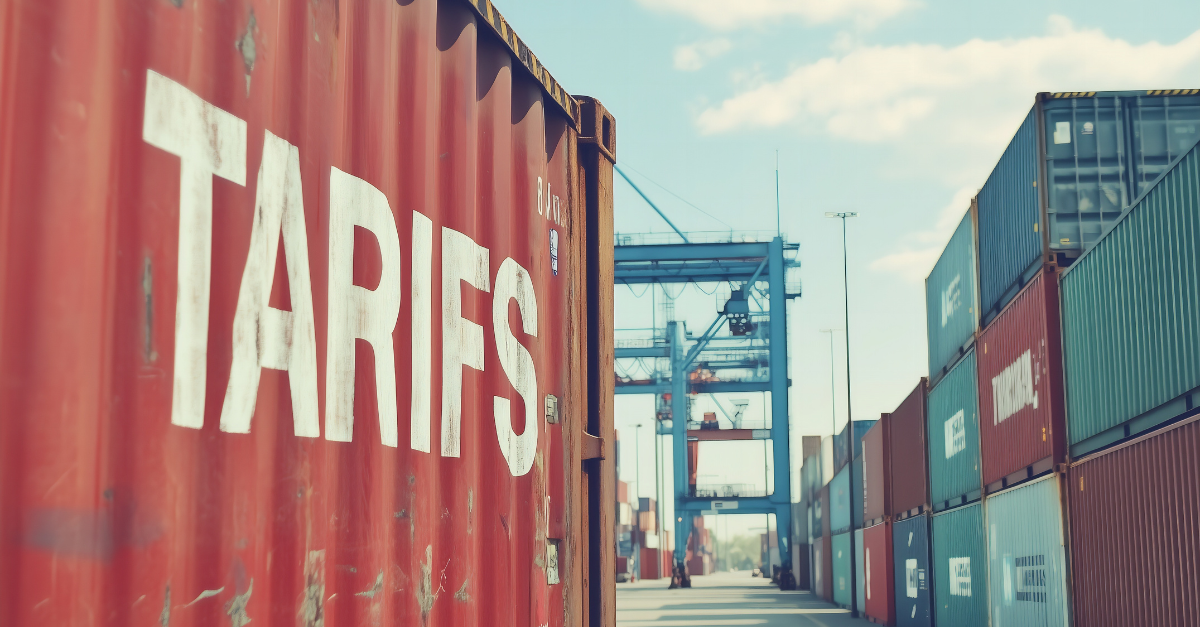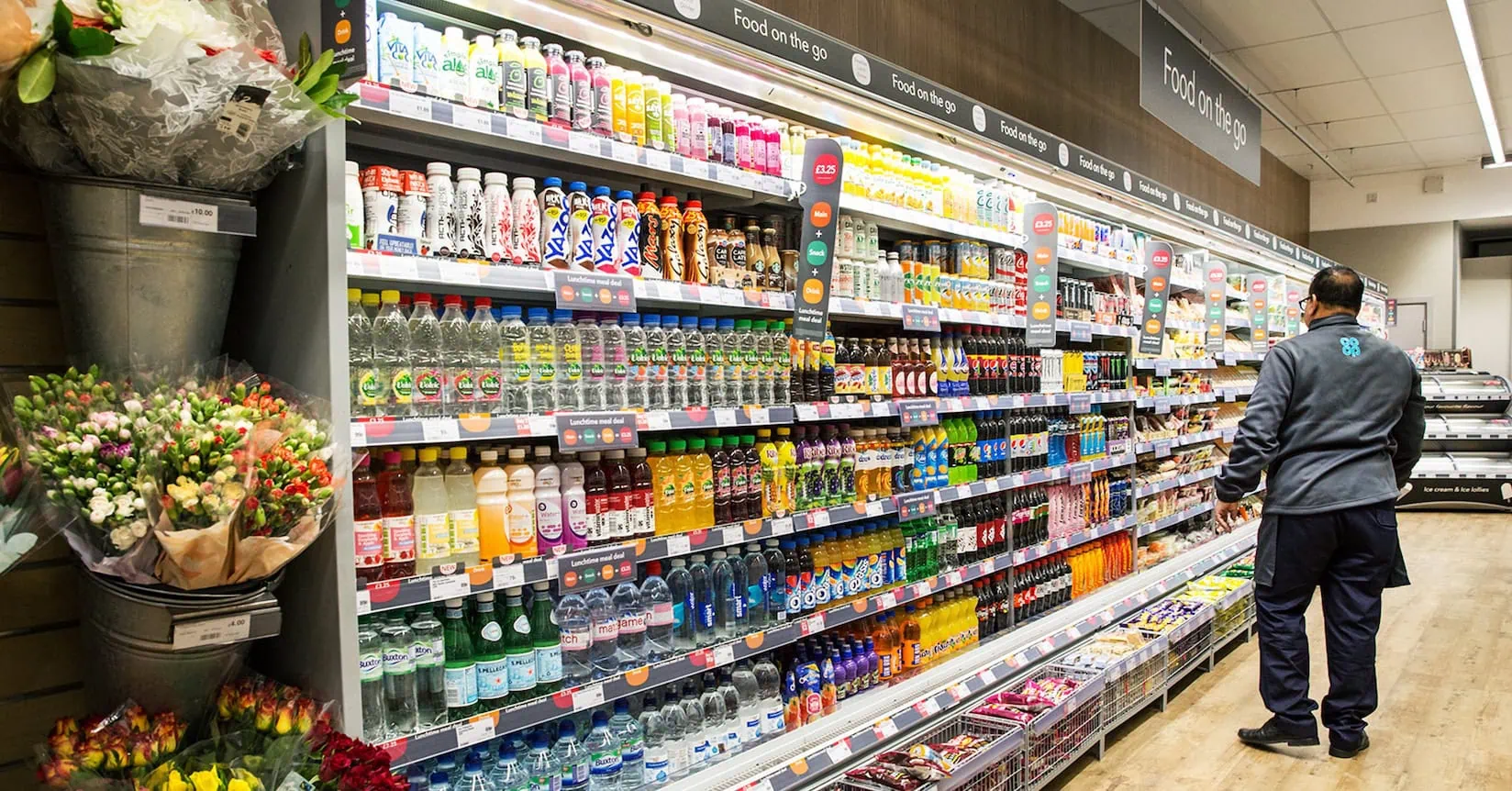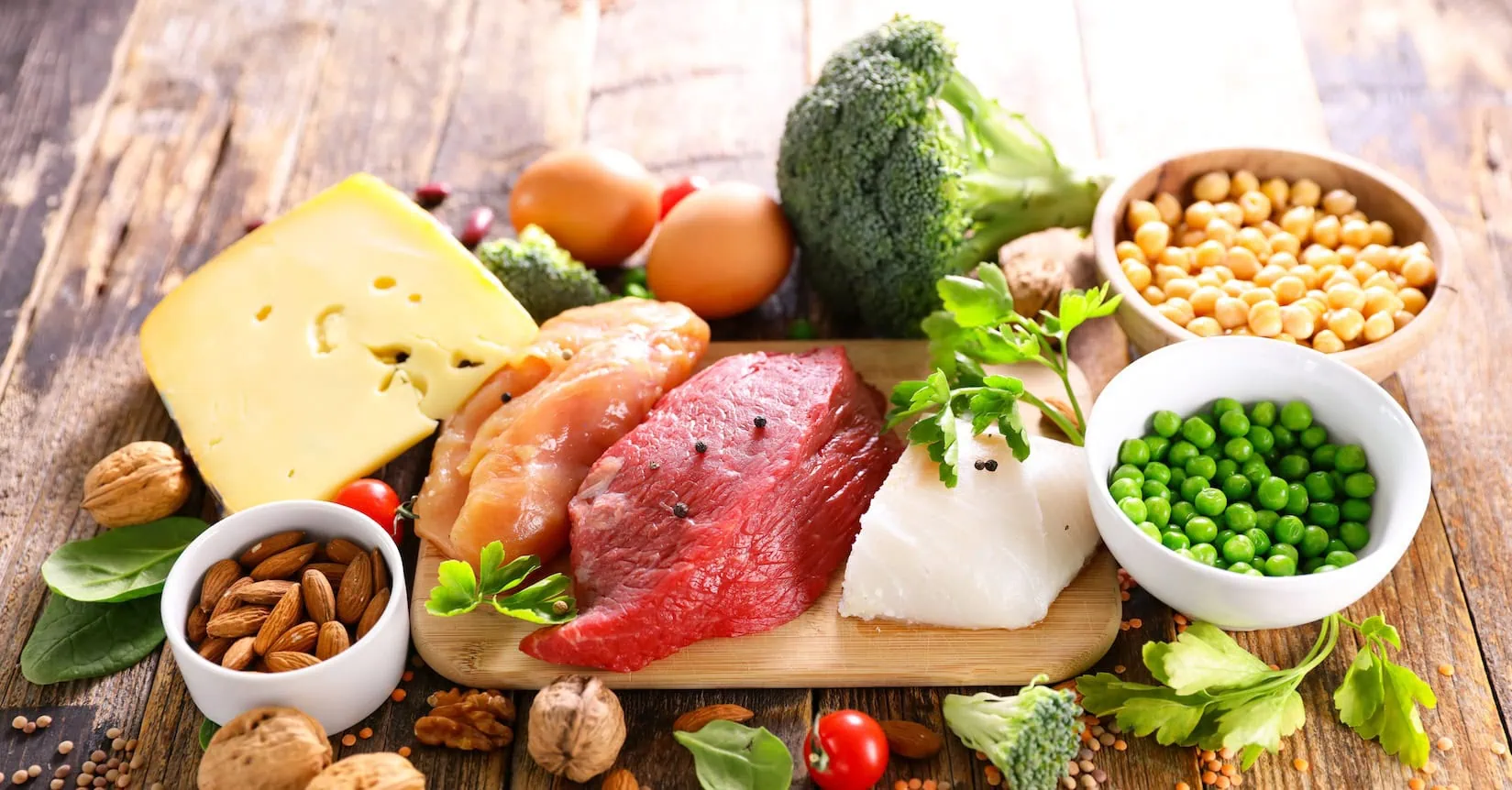A comprehensive analysis of recent market developments from the latest Dairy Cafe webinar
The global dairy industry stands at a critical crossroads as new US tariffs, foot and mouth disease (FMD) concerns in Europe, and shifting currency exchange rates create unprecedented market volatility. In our most recent Dairy Cafe webinar, experts Jasper and Seb from Dairy Cafe shared valuable insights into these market-shifting events and their potential impact on global dairy trade.
As our host Feiko noted at the start of the session: “This week’s edition was a tricky one because there’s so much going on. We had all these topics lined up already, but our long-term planning, well, we could throw it out the window as global trade will definitely be the key thing we discuss today.”
US tariffs: the new market reality
The recent announcement of extensive new tariffs has sent shockwaves through global markets. The measure imposes a blanket 10% tariff on all products entering the US, with some countries facing even higher rates of 20-25%. These tariffs come on top of existing import duties, creating a significant shift in global dairy trade dynamics.
As Seb explained: “It is very interesting and I think we are going into a couple weeks of complete unknown. It is something that’s never happened before. So much tariffs in one go, completely bypassing a lot of trade relationships that exist.”
Key insights on the tariff situation include:
- Exchange rate impact: The US dollar immediately lost strength following the tariff announcement, with the EUR/USD exchange rate jumping from 1.08 to nearly 1.12 within a day – making European products effectively 3% more expensive compared to US products. As Jasper noted: “Within the matter of a day, basically all European products became 3% more expensive compared to all other destinations. It’s quite the change.”
- Market uncertainty: The unprecedented nature of these tariffs creates significant unpredictability for global dairy trade
- Varied international responses: As Seb observed: “For the moment, it’s also important to say that most countries have either accepted or said they’re gonna negotiate. China is probably the only one that said ‘We’re gonna retaliate straight away.'”
- Competitive advantages: New Zealand’s foreign minister expressed “delight” with their 10% tariff rate, noting it gives their exporters a “15% plus advantage over competitors” facing higher rates
Pre-existing US market advantages
Even before the tariffs, US dairy products were already gaining market share globally due to competitive pricing:
- Cheese production boom: Expanded US cheese production capacity has led to significantly increased exports – up nearly 20% year-to-date compared to 2023. As Jasper highlighted: “If you look at the entire year of 2024, they exported just over 500,000 metric tons. Well, in 2023 it was not even 450,000. So they exported 80,000 tons more of cheese. That’s almost 20% more, and that’s huge.”
- Cheddar price differentials: US cheddar has been priced substantially lower than European and Oceanian alternatives for over six months. Jasper explained: “The American or the US cheese price has been lower for more than six or seven months. It’s actually quite the difference. And we see that US exports are growing and many countries have the option to choose between American or European or Oceanian products. And when American product at this point is really cheap, ultimately they’ll go there.”
- Herd size growth: As Seb noted, “There was also a herd size that we talked about, I think last year that was growing. That was positive. There’s been some really good milk production.” Jasper confirmed: “In the US as a whole, the herd size is increasing. I think the most recent data shows that we’re looking at a very good milk production, very good intake.”
European challenges: FMD outbreak growing
While tariffs dominate headlines, Europe faces its own critical challenge with an expanding foot and mouth disease outbreak:
- Eastern Europe impact: Nine farms across Slovakia and Hungary have confirmed FMD cases, with the disease spreading westward. As Jasper warned: “FMD, we have their ninth infection documented yesterday, or eighth and ninth actually. So we definitely have a big risk on the European continent as well.”
- Border controls: Austria has announced significant border restrictions, as Jasper detailed: “We are hearing that from Saturday onwards for at least a week, 23 border crossings between Austria and Slovakia and Austria and Hungary are being closed. So they’re definitely on high alert in Austria.”
- Limited but growing impact: While affected countries like Hungary export relatively small volumes compared to major exporters like Germany, the risk of spread to major dairy-producing nations remains high. As Jasper explained: “If we look at Hungary, for example, we can see how much milk equivalent they export to the world market… it’s less than 60,000 metric tons on a monthly basis. If you look at the German exports, we’re looking at just below 1.2 million metric tons per month. So we’re really talking about 20 to 25 times more exports.”
- Rapid disease spread: The situation is evolving quickly, as Seb cautioned: “It travels extremely fast. High transmittable disease. So to be very careful.”
Strategic considerations for global buyers
Dairy buyers now face complex decisions when sourcing products:
- Asian market perspective: When asked what choice he would make as an Asian buyer, Jasper reflected: “There’s essentially two origins you can purchase from – two big origins, US and Europe. And they both have their faults. What we’ve seen recently is that the US has been anticipating this, has been lowering price because of this.”
- Risk assessment: For now, FMD-free European countries may represent the safest option despite higher prices. Jasper advised: “Personally I find it very difficult that today, definitely with the risk that we see on FMD, do you really wanna go for that? Luckily, FMD hasn’t hit Europe as a whole. So at this point, I would say if you don’t want to take the risk on possibly higher tariffs while the product is on transit, countries that are FMD free from Europe might be your best bet.”
- Rapidly changing conditions: Seb noted: “It moves quickly as we saw over the last few months. And it can hit Central Europe, like it did in Germany.” Jasper added that price factors can shift suddenly: “Let’s say the US decides to drop another 2 to 5% price, and as they have done with the exchange rate, that discount suddenly becomes much more favorable. So it can change in an instant.”
- Specialty product impacts: Specialty European cheeses and Irish butter exports to the US face particular challenges with new tariffs. Seb observed about Kerrygold: “It’s a bit of a luxurious product. And of the last few months, they’ve actually imported a lot more because they knew that this was gonna come.”
Other market developments
Beyond the headline issues, other important market trends include:
- Lactose market tightness: Strong demand for lactose has created tight supplies in both US and European markets. Jasper explained: “Global demand for lactose has actually been quite good. New Zealand has been purchasing quite a lot because of their standardization. Now Europe has actually been purchasing a lot for standardization. So lactose right now, both US and Europe actually have quite a tight supply. Many of the producers are already sold out.”
- Standardization needs: The lactose market has been impacted by preference shifts in other dairy products. As Jasper noted: “There was a small preference for butter and SMP because prices were higher, so therefore the expectation was we needed some more lactose to do more standardization and it’s really made that market very tight.”
- Q2 market stabilization: After recent price jumps, the lactose market is expected to stabilize in the short term. Jasper predicted: “For now, we actually expect it to be slightly stable or more stable. There’s no real urgency to buy a lot right now, but it has been the case in the past several months. And then we saw prices really jump up.”
Looking ahead
The dairy industry enters a period of exceptional uncertainty as markets adjust to these major disruptions. As Aria cautioned: “We are going into a couple weeks of complete unknown. Nobody knows.”
Key factors to watch include:
- Potential retaliatory tariffs from affected trading partners. Jasper noted: “If you have a 10% additional tariff, which is not too unlikely, it removes that margin. Are you really willing to take that risk?”
- Currency exchange rate fluctuations impacting relative competitiveness, with Jasper highlighting the rapid changes: “In the 30 minutes we’ve been talking, the US dollar has lost even more strength.”
- FMD containment efforts in Eastern Europe, with our expert warning: “It moves quickly as we saw over the last few months, and it can hit Central Europe like it did in Germany.”
- Shifting trade patterns as countries potentially seek to reduce US market dependency. As Jasper observed: “China, Japan, and South Korea might be trading a little bit more in between each other rather than with the United States.”
Industry participants will need to closely monitor developments and remain agile in their strategic planning. The coming weeks and months will be critical in establishing new market equilibriums and trade flows in the global dairy industry.
Want to dive deeper into these critical market developments? Watch the full Dairy Cafe webinar on-demand now by clicking here.
For more market intelligence and analysis, start a free trial on our platform here. Join us again in two weeks for our next biweekly update on global dairy markets.



